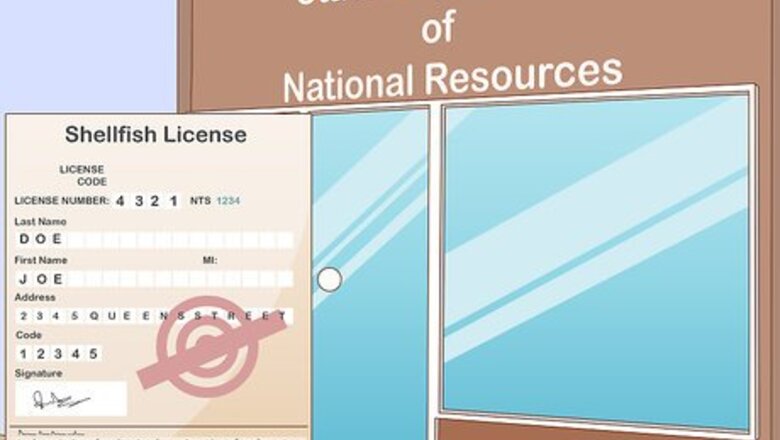
views
Familiarizing Yourself with Regulations and Permits
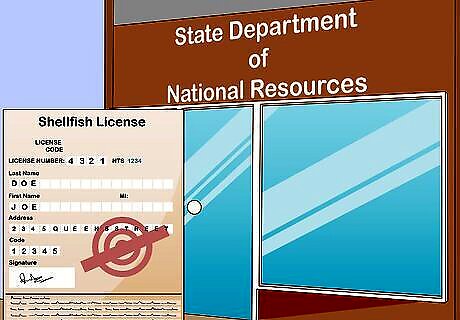
Go purchase a shellfish license before the season starts. Licenses are issued more sparingly now than in previous decades due to overfishing concerns. There are chances the maximum amount of allowed licenses issued could be reached if you go by the time the season has already started. Everyone who is participating in the shrimping must have a license. Visit your state’s Department of National Resources website to find information on obtaining necessary licenses and permits.
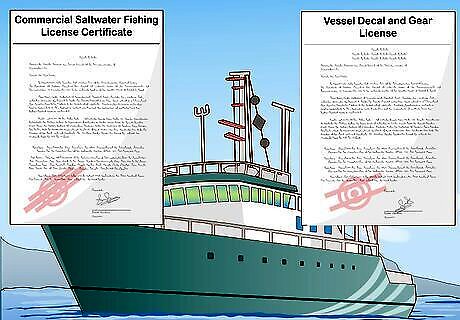
Get the additional permits you’ll need for equipment you’ll use. Using certain types of gear, such as shrimping pots, require permits of their own for each person involved. Depending on the state you’re in, the amount of equipment allowed per person, and per boat, may be specified. You’ll also need a permit for shrimping on boats like trawlers.
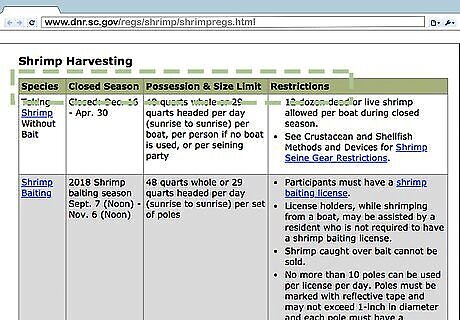
Check online to learn your state’s shrimp catching regulations. Important information to know would be the limit per day on how much you’re allowed to catch, and equipment specifications, especially the mesh size on the nets you’ll be using. Other rules might include what equipment can’t be used, with certain states not allowing handheld nets to be used to catch anything. Depending on when and where you go shrimping, the amounts you’re allowed to keep per day may vary. Rivers and smaller lakes may only allow amounts under 10 pounds or a specific number of shrimp, while ocean waters may allow for hauls of up to 20 pounds or more.
Shrimping in the Best Locations and Conditions
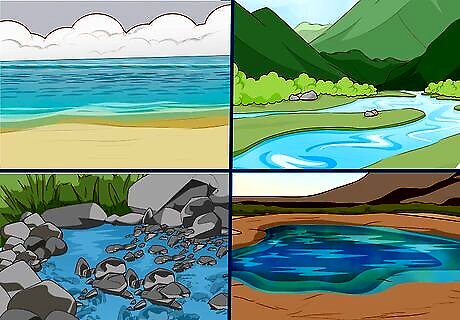
Visit the ideal spots for catching shrimp. Although shrimp are found throughout bodies of water, the best places to catch them are at ocean shores, rivers and creeks, bays, lakes, and estuaries. All are shallow and easy to access, allowing you to net large amounts of shrimp as they move from larger bodies of water to smaller ones as they travel around.
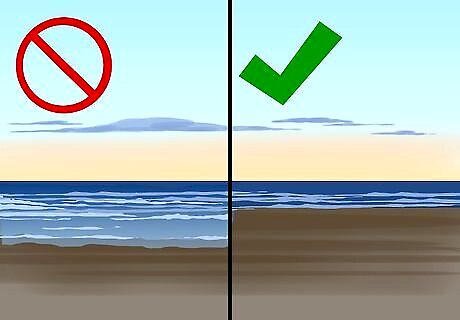
Go shrimping when the tide is low. A rule of thumb is that the lower the tide, the better the catch. Schedule your shrimping trips during the time of day when the tide is furthest out to catch them in intertidal areas. Catching them in groups as they swim back out to sea as the tide starts coming back is also a smart tactic. Going during a full moon will offer the best outing for catching shrimp. Local bait shops will have tidal charts and tables for you to purchase.
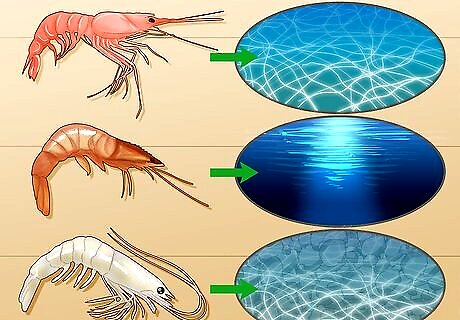
Look at water conditions to find the type of shrimp you’re looking for. Different species live in different water types and at different depths. Pink shrimp for example live in clear waters, while brown shrimp tend to be found in deeper, murkier waters. White shrimp can be found in shallow waters that are less salty than the waters pink and brown shrimp reside in. If shrimping at night, use green light to avoid scaring the shrimp with white light. On overcast days the shrimp will be closer to the surface than on sunnier days.
Using a Casting Net
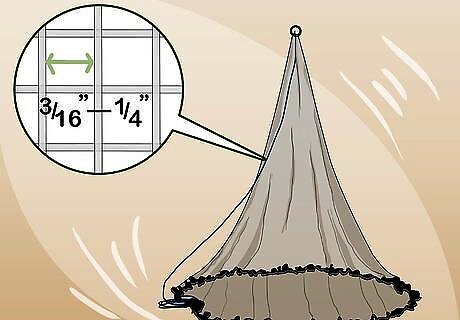
Purchase a casting net with a proper mesh size for catching shrimp. Casting nets have weights attached around them that allow the net to sink and capture creatures caught under where you throw it in the water. The smaller the size of the fish you’ll be catching with the net, the smaller its mesh size will need to be. For shrimp, use nets with a mesh size opening of 3/16 to 1/4 inches across.
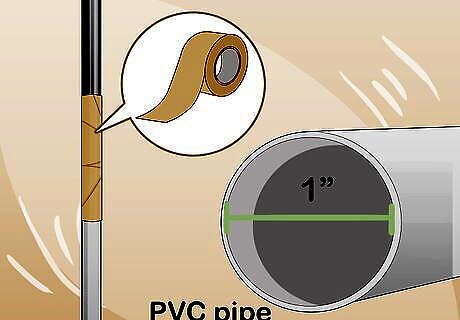
Prepare shrimp baiting poles to cast your net around. You can make these by taking a several foot long PVC pipe with a 1-inch diameter, and securing a metal pole into one side of it. The metal pole will serve as your anchor for digging the bait pole into the silt at the bottom of the water. Before use, put reflective tape on the poles, and mark them with the number on your boat’s shrimping license.
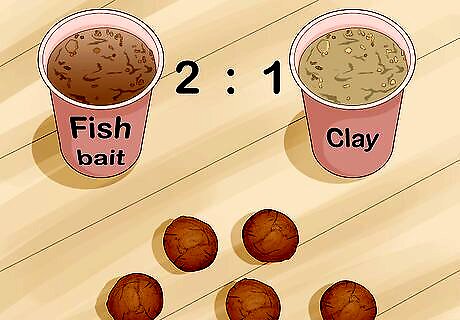
Gather fish bait and clay to make bait balls. Fill several cups with a 2:1 ratio mixture of fish bait and clay respectively, and pour them into a larger mixing bucket. Add water until it thickens enough to allow you to mold the mixture into small flat patties, which you can allow to sit in the sun to dry until they are no longer sticky. You’ll want to be making about 2-3 bait balls per each pole you have out.

Place bait poles according to your state’s regulation on their location. Before placing them in the water, know that poles must be within a set distance from one another, and far enough away from the bait poles of other shrimp catchers, as well as docks, public landings, and boat ramps. A maximum number of poles allowed may be enforced. Unattended bait poles may be confiscated.
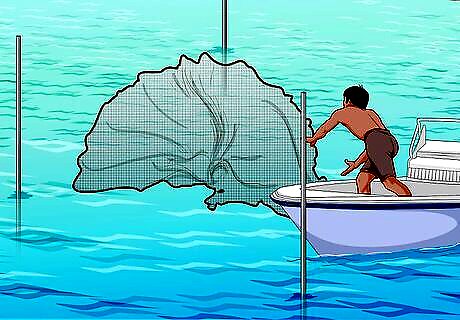
Cast your net in the area of the bait poles. Coil the rope around your weak hand, and make several loops you’ll reel it in with. Hold two sides of the net by the lead line on its edge, and with your upper body, swing the net out, throwing the sides away from each other as you do. The net should open up wide before hitting the surface. When out on the water, cast in the direction of a pole, or in the area between two poles. Practice tossing your cast net in your backyard until you feel comfortable covering a wide area and far distance. The shrimp can sometimes be harder to spot due to the dissolving bait balls, but you should be able to see generally where they are in the water, and where you should be casting your net.
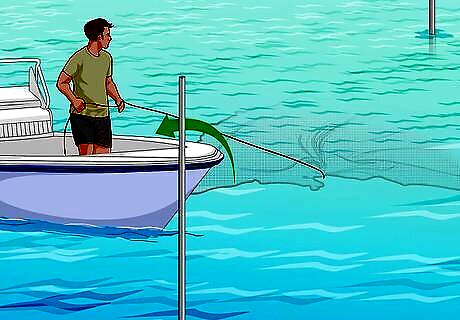
Pull the rope back in to close the net around your catch. Reel the net back in, wrapping the excess rope around your arm as you do. Back your boat up to gently to tug your net through the water, before pulling it out of the water. Be careful for any sudden movement from the creatures caught inside. Place any shrimp you happen to catch in a medium-sized iced cooler to keep them fresh while you continue catching more.
Using a Shrimp Pot
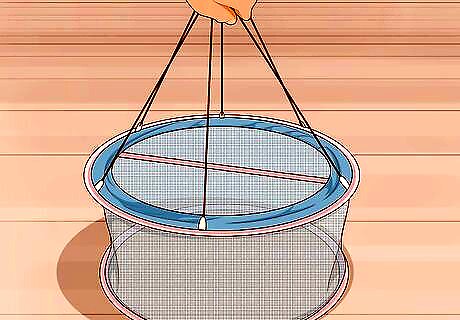
Use a shrimp pot to catch large amounts of shrimp. Although it won’t be viable for everyone due to the length of time it’s needed to be left in the water, a shrimp pot will be the most efficient way to maximize the amount of shrimp you can catch from one single haul. Use a pot if you’re needing to collect a large amount of shrimp for something, such as a recipe, rather than for the sporting aspect of shrimping.
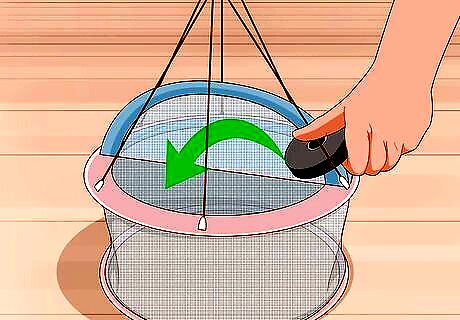
Attach weights to the pot to sink it. Depending on how deep you’ll need to sink the shrimp pot, you’ll need to attach enough weight to get it to its desired depth. The weights should be tied uniformly across the underside of the pot so that it can lie flatly once it lands. More weights or an additional anchor may need to be attached in the case of stormy weather to secure the pot.

Use a visible floater on the water’s surface showing the pot’s location. Choosing the right size for a floater depends on the size of the pot, as you don’t want one so big that it lifts up the pot, scaring the shrimp. The floater should be brightly colored in order to be easily spotted for identification purposes by inspectors. Depending on the state, you may need to include your boat hull or shrimp license ID numbers on tags attached to the floater for the inspectors to see.
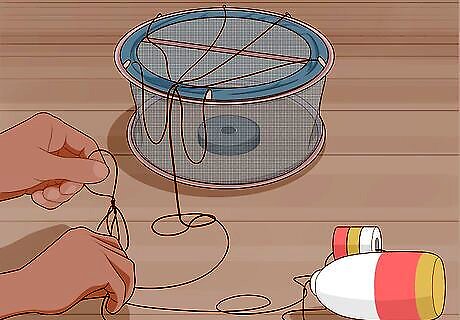
Attach your floater to the shrimp pot with a weighted line. A line with a lead core should be used to attach the shrimp pot to the floater at the water’s surface. Feed the line through the openings along the edge of the pot, usually a series of metal loops or small holes in the cage, tying knots in the line through each. Tie this to the loop on the underside of the floater. Your weighted line should not be so heavy that it’s dragging down your floater.
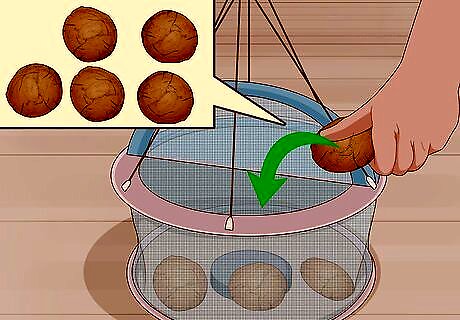
Add bait to the pot to lure the shrimp in. The pots contain a trap door that doesn’t allow the shrimp to swim back out once they’ve been led inside by the bait. The pot should have a place where you can insert the bait inside, either a hatch or small door in the wire frame cage. Bait can either be purchased, or made at home from mackerel, tuna, canned cat food, or any other fish or crustacean remains you may happen to have.

Look at water conditions to find the type of shrimp you’re looking for. Different species live in different water types and at different depths. Pink shrimp for example live in clear waters, while brown shrimp tend to be found in deeper, murkier waters. White shrimp can be found in shallow waters that are less salty than the waters pink and brown shrimp reside in. Ask around local bait shops to learn any scoops on nearby premier shrimping spots.
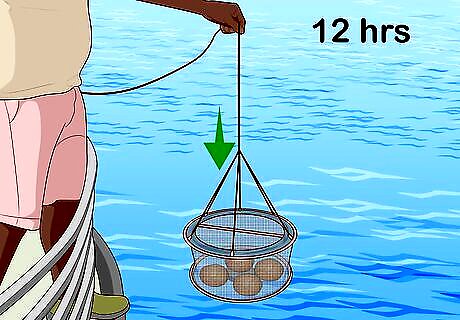
Toss the pot into the water and let it sink to the depth you want. After finding the area with the highest number of shrimps, use a measuring device to determine the depth of the water the shrimp are in. Cast your pot in with the appropriate amount of weights for it to reach that depth. Leave the pot underwater for 12 hours before retrieving it again.
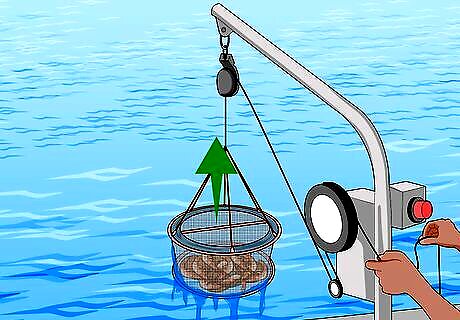
Reel the pot in by hand or with an electronic hauler. Grab the floater out of the water and begin pulling the rope up along with the cage. If your boat comes equipped with an electronic hauler, feed the rope through the spindle which will begin spinning and pulling up the rope as it wraps it around itself. Hold the rope firmly as you guide it out the other end of the spindle until the pot is completely pulled the pot out of the water. Once you have your pot back on the boat, empty it of the shrimp you’ve caught and refill it with bait to be able to use it once more.


















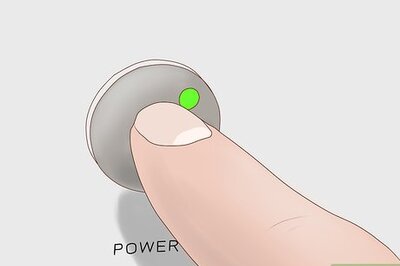

Comments
0 comment